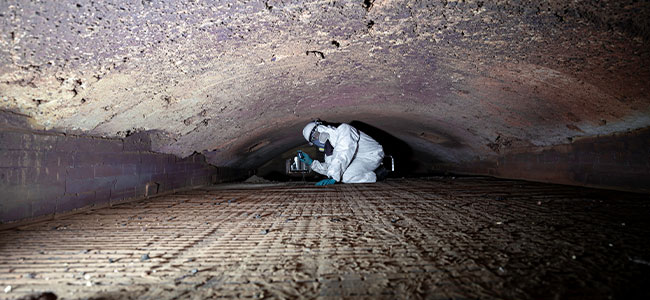
Training Is Essential to Prevent Fatalities in Confined Spaces
Confined spaces safety training involves multiple critical elements to prevent accidents and safeguard the lives of workers in high-risk environments.
- By Ralph Blessing
- May 01, 2024
The word “confined” can generate fear in many. According to OSHA, a confined space is one that has limited ingress and egress, is not meant for continued occupancy and is large enough for an employee to enter and conduct work (OSHA, 2024).
A confined space can be unforgiving in many ways. The Bureau of Labor Statistics reported in 2020 that 1039 employees died due to this issue between 2011 and 2018 (BLS, 2020). These were senseless losses that clearly could have been averted by simply following the guidelines established in 29CFR1910.147 and/or 29CFR1926.1200.
To prevent these types of deaths, proper training is essential to ensure workers can identify hazards, utilize necessary equipment, and respond effectively to emergencies.
The Dangers of Confined Spaces
The following examines the training requirements for confined space entry, highlighting key elements such as hazard recognition, atmospheric monitoring, and emergency procedures. By understanding and fulfilling these requirements, organizations can mitigate risks and prioritize the safety of workers in confined spaces.
The first and most important aspect of confined space training is identifying what is a confined space based on the three factors mentioned earlier. Once this has been established, it is incumbent upon the employer to identify if there are any other confinement hazards such as engulfment, low oxygen levels, explosive atmosphere, electrical or caught-between (when a worker can be compressed between two objects or can caught in equipment). If any of these situations exist, then the confined space now becomes a permit-required confined space (PRCS), requiring a lot more scrutiny and action on the part of the employer.
Before entering a non-permit or PRCS space, efforts should be made to purge the space to ensure any hazardous gases or other hazardous atmosphere(s) are cleared, employing the required calculations. This involves measuring the total cubic feet of the space and identifying the capacity of the purging fan. Fans will have their capacity indicated on their information plates and it is identified in cubic feet per minute (CFM). Although OSHA does not specifically identify how many exchanges need to occur, a good rule of thumb is five complete air exchanges before retesting the space and entering. The goal is to maintain an oxygen level between 19.5 and 23.5 percent.
Test the confined space for gases at the spacing intervals (stratified) recommended by the manufacturer of the gas detector. This may require vertical and horizontal testing, depending on the configuration of the space since different gases may be present at different levels. Retesting of the atmosphere is always required after the original purge when a toxic gas was encountered.
This article originally appeared in the April/May 2024 issue of Occupational Health & Safety.